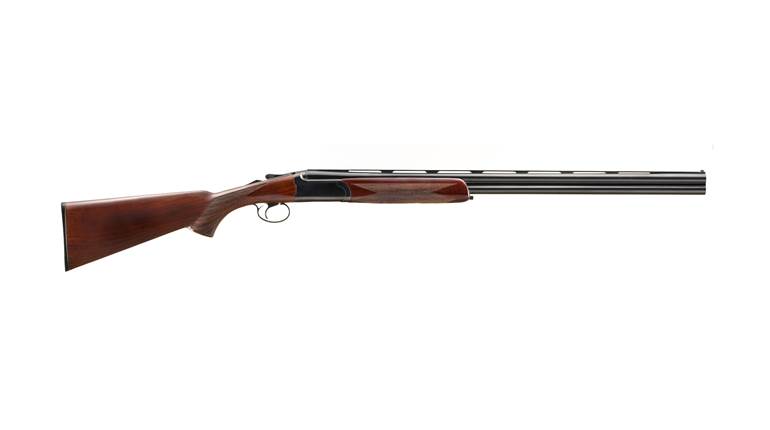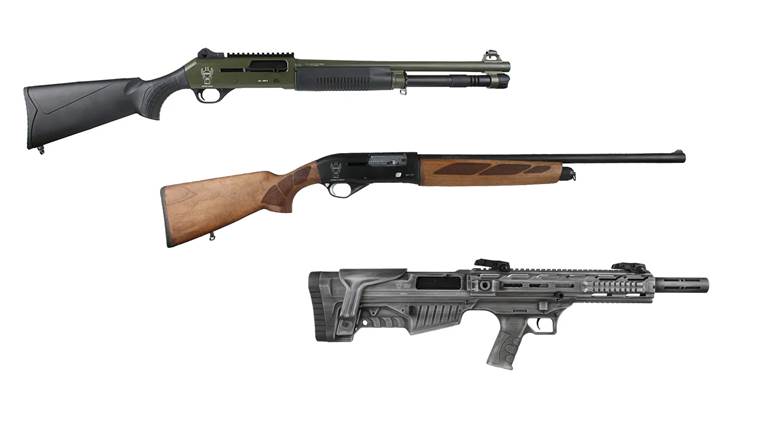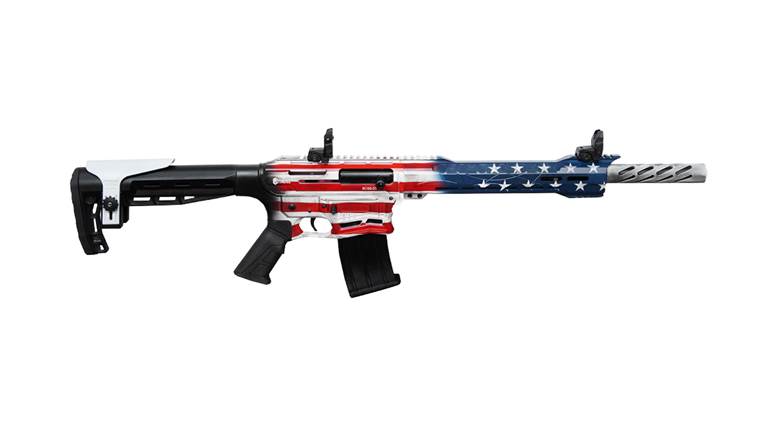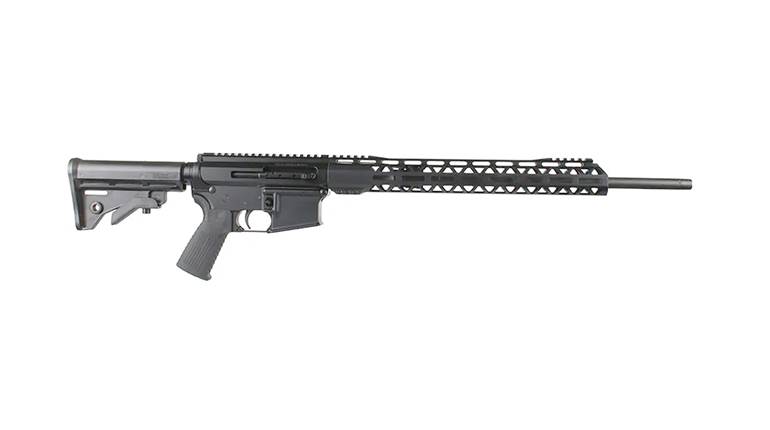
Stoeger Industries, Inc., a corporation beneath the extensive Beretta Holding S.p.A. umbrella of companies, has imported Turkish-made, semi-automatic shotguns since 2001, when the 3"-chambered, 12-ga. M2000 was introduced. Three years ago, the like-chambered M3000 replaced the popular M2000. Surprisingly absent from both lines, though, was a smaller, 20-ga. counter-part to the ubiquitous 12. That all changed in 2015, when Stoeger introduced the 20-ga.-chambered M3020, which is reviewed here.
As with its predecessors, the M3020 is designed around Benelli’s inertia-driven operating system. Detailed numerous times within these pages, step-by-step descriptions of the system’s basic functions aren’t necessary here; however, it’s important to note that the Stoeger deviates slightly from the Benelli design. Instead of the buttstock-housed recoil spring and bolt-mounted link of the Benelli system, the M3020’s bolt sits atop an action bar that works in conjunction with a recoil spring surrounding the magazine tube. The bolt assembly consists of the body, a two-lug rotating bolt head with spring-loaded ejector, an inertia spring, a firing pin and spring, and a bolt handle. The M3020 will reliably cycle the full range of 20-ga. loads—from 2½-dram, 7/8-oz., 2¾" target shells to hard-hitting 3" magnums—without any adjustments. Per the company’s instructions, a three-to-four-box “break-in” period is recommended for sure functioning with 7/8-oz. loads.
The merits of inertia operation are worth mentioning. First, since no propellant gases are utilized for operation (and thus exit the muzzle), the action remains relatively clean. There are no gas ports, pistons or rings to scrub, nor O-rings to replace. This greatly reduces cleaning and maintenance time and frequency. Unlike gas-operated guns, which can fail if not kept residue-free, inertia-operated guns are workhorses that tend to flourish even in adverse conditions. Second, there are fewer parts to wear and/or break, lending the shotgun longevity. This also reduces overall weight. Full-size versions of the M3020, available with either 26" or 28" barrels, tip the scales at 5 lbs., 9 ozs., and 5 lbs., 11 ozs., respectively—while a 26" “compact” variant weighs a paltry 5 lbs., 8 ozs.

Since the M3020’s bolt head locks up into recesses in a steel barrel extension, the receiver is a non-stressed part and is, therefore, made from weight-saving aluminum. The top is not drilled and tapped. On the right side of the receiver, below the ejection port, lies the bolt-release button. Several inches to its rear, a single pin holds the trigger guard assembly in place. Once withdrawn, the aforementioned unit is easily removed for cleaning. Included in the unit are the fire controls: a cross-bolt safety with red indicator ring; the cartridge drop lever, which enables rapid shell substitution; and a single-stage trigger. On the sample M3020, the trigger broke at 4 lbs., 15 ozs., and exhibited virtually no creep or overtravel. It was among the best shotgun triggers we’ve encountered. When the hammer is cocked, the bolt will not remain locked to the rear unless the bolt drop lever is activated.
The M3020’s barrel is topped with a 0.245"-diameter, ventilated rib ending in a red, 0.158"-wide fiber-optic rod. The barrel is threaded to accept interchangeable, Beretta/Benelli MobilChoke-style tubes. Included with the Model M3020 is an extended “turkey” choke tube, as well as two flush-fitting versions in modified and improved cylinder constrictions. A choke tube wrench is provided, too. The spring-loaded ejector assembly is located on the barrel extension.
The M3020’s synthetic furniture is available in black (26" or 28"), Realtree APG (26") or Realtree Max-5 (28") in the full-size versions. Only black is offered in the compact model. The test gun was completely clad in Realtree Max-5. At 1.55" wide and featuring a finger channel along its top, the fore-end was easily grasped by smallish hands, and, like the pistol grip, the fore-end has molded-in checkering for a secure purchase. The buttstock is fitted with a ventilated, semi-tacky recoil pad that’s 13/16" thick. However, the pad has minimal “give” to reduce recoil. Finally, the pistol grip cap is adorned with an inset Stoeger emblem, and the butt has an integral sling swivel stud complementing the one located on the magazine cap.
 Testing the M3020 took longer than anticipated and included several twists and turns. Made obvious by the horrendous filth, missing paint and gouged metal, the first “loaner” gun we received had been seriously mistreated by a previous gun writer. Still, we headed to the range with it—after a thorough cleaning and examination for safety issues. Unsurprisingly, the battered gun began exhibiting function issues at the sporting clays course, and they continued into patterning. For example, whereas Winchester Super-X 2¾", 2½-dram, 7/8-oz., No. 7½ Game Loads functioned flawlessly, the identical load from Remington gave intermittent reliability. At the patterning board, we experienced several functioning failures using Federal’s Mag-Shok Heavyweight 2¾", 11⁄8-oz., No. 7 load. There was no reason to proceed with the M3020 in such a state, so we shipped it back to Stoeger. The company promptly sent a replacement for evaluation; this time it was a new shotgun.
Testing the M3020 took longer than anticipated and included several twists and turns. Made obvious by the horrendous filth, missing paint and gouged metal, the first “loaner” gun we received had been seriously mistreated by a previous gun writer. Still, we headed to the range with it—after a thorough cleaning and examination for safety issues. Unsurprisingly, the battered gun began exhibiting function issues at the sporting clays course, and they continued into patterning. For example, whereas Winchester Super-X 2¾", 2½-dram, 7/8-oz., No. 7½ Game Loads functioned flawlessly, the identical load from Remington gave intermittent reliability. At the patterning board, we experienced several functioning failures using Federal’s Mag-Shok Heavyweight 2¾", 11⁄8-oz., No. 7 load. There was no reason to proceed with the M3020 in such a state, so we shipped it back to Stoeger. The company promptly sent a replacement for evaluation; this time it was a new shotgun.
Round-two testing proved to be the polar opposite of the first go-round, as the gun cycled without issue using the same target loads as before. Round after round, the M3020 fed, fired, extracted and ejected flawlessly, regardless of the 20-ga. ammunition used. While shooting at clays we found that the M3020 shouldered quickly, but establishing cheekweld tended to leave the testers’ eyes high, which naturally affected aiming and pattern placement. Given its light weight, swinging the M3020 is nearly effortless, making it easy to track, shoot and follow through. These characteristics would certainly endear it to upland and waterfowl hunters; however, the turkey hunter awaiting a reluctant longbeard to cut the distance would most appreciate its lightness in hand.
With waterfowl season approaching at the time of our testing, we opted to use Kent Fasteel 3", 7/8-oz., No. 4 steel loads for pattern testing. When paired with the factory modified choke, the M3020 delivered 69 percent of the steel shot in a 30" circle at 40 yds., and it did so with relatively consistent distribution around the point of aim, too. From the gun’s 28" barrel, the lightweight, yet pellet-packed, Fasteel load achieved a scorching 1572 f.p.s.
Concerning fit, finish and design, our overall impressions of the M3020 were favorable. The only suggestions for improvement were a more consistent finish on the bolt and a softer recoil pad—nitpicking, we know. Take our word for it, shooting round-after-round of 3" magnum loads in the M3020 wasn’t a fun-filled occasion—especially when wearing just a T-shirt. We know because, as we tested the M3020 we were also evaluating 10-ga. loads in a 9-lb., 9-oz., gas-operated Browning Gold Light, and the former had worse perceived recoil than the later. With winter clothing and a mind focused on the quarry, this isn’t likely to be as apparent.
As was especially evident in testing the Stoeger M3020, even inertia-operated guns can balk when greatly abused. But, when properly maintained, the Turkish-made M3020 stands to provide a lifetime of reliable service. Best of all, with a base suggested retail price of $599, you get an inertia-operated design for a fraction of the price of an Italian-made gun. That’s quite a deal.






































